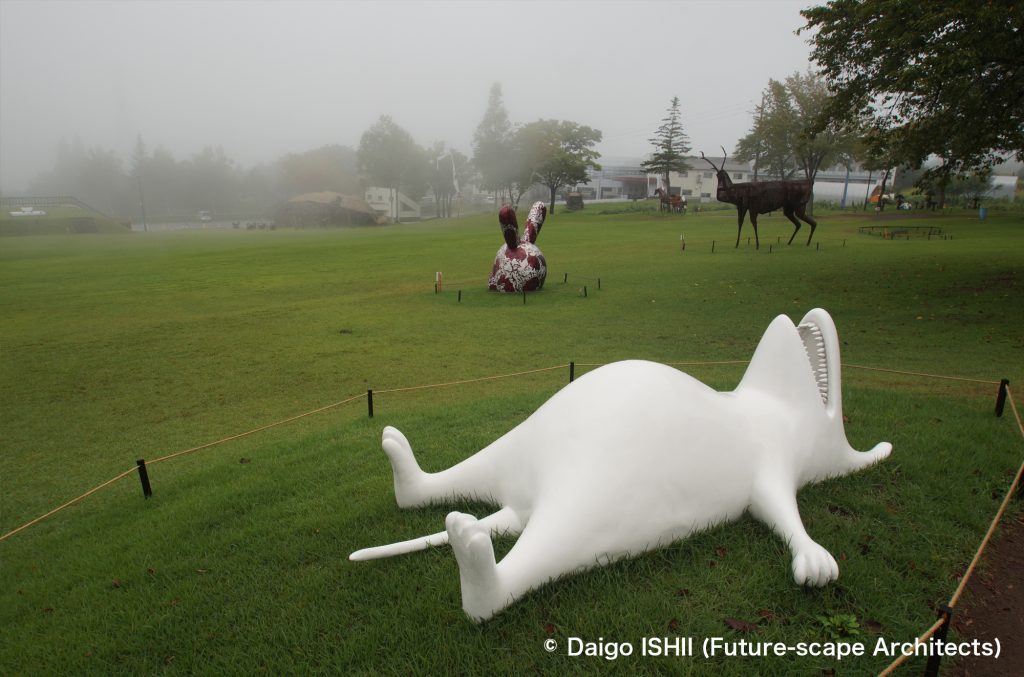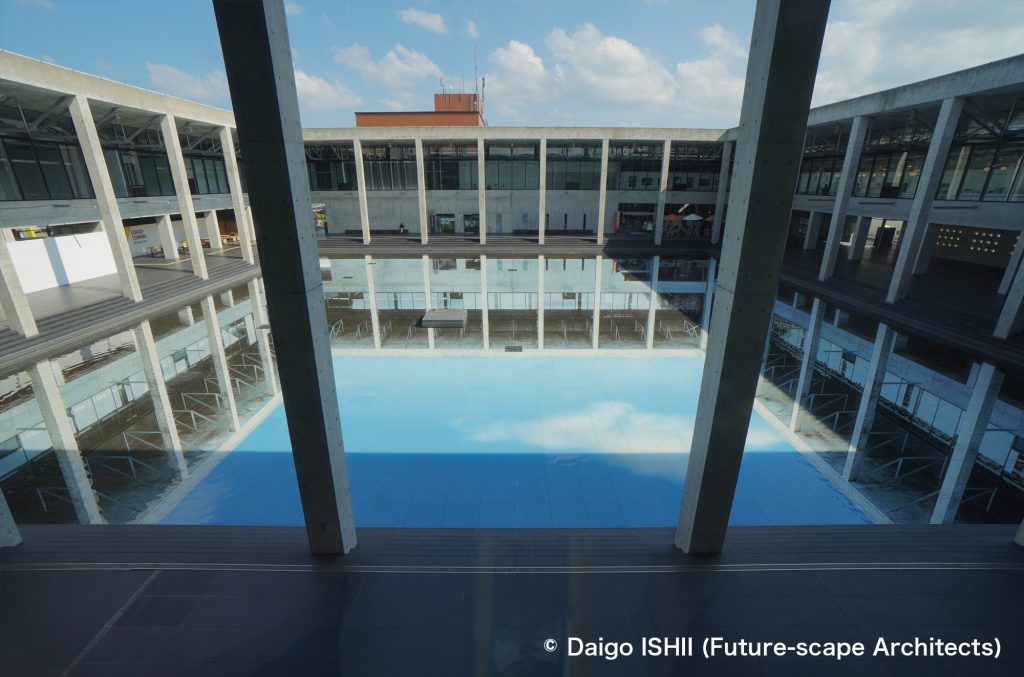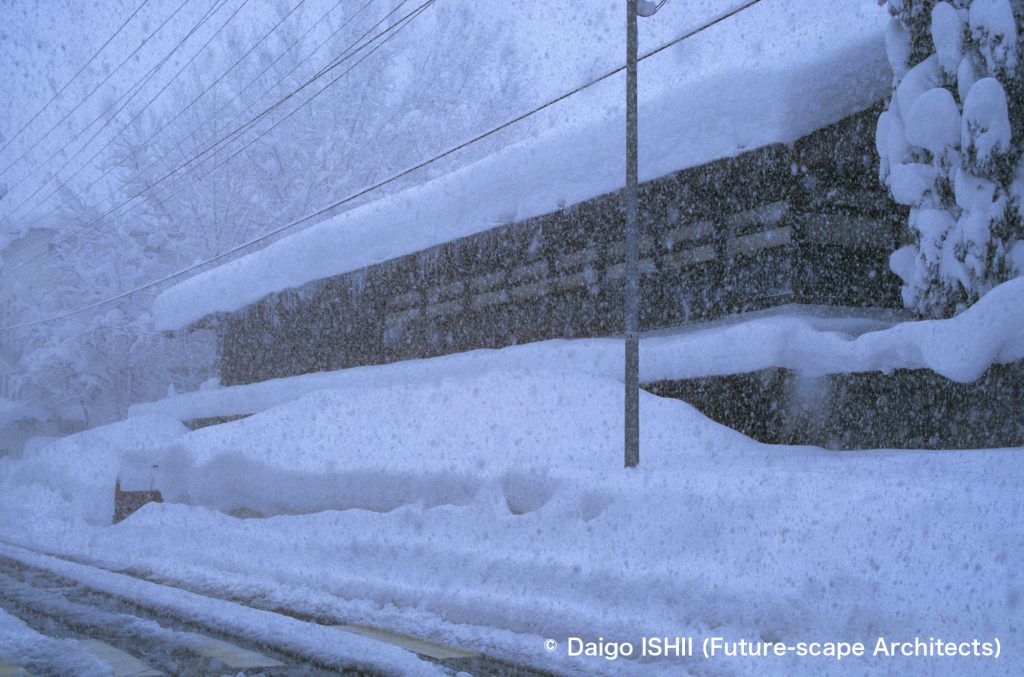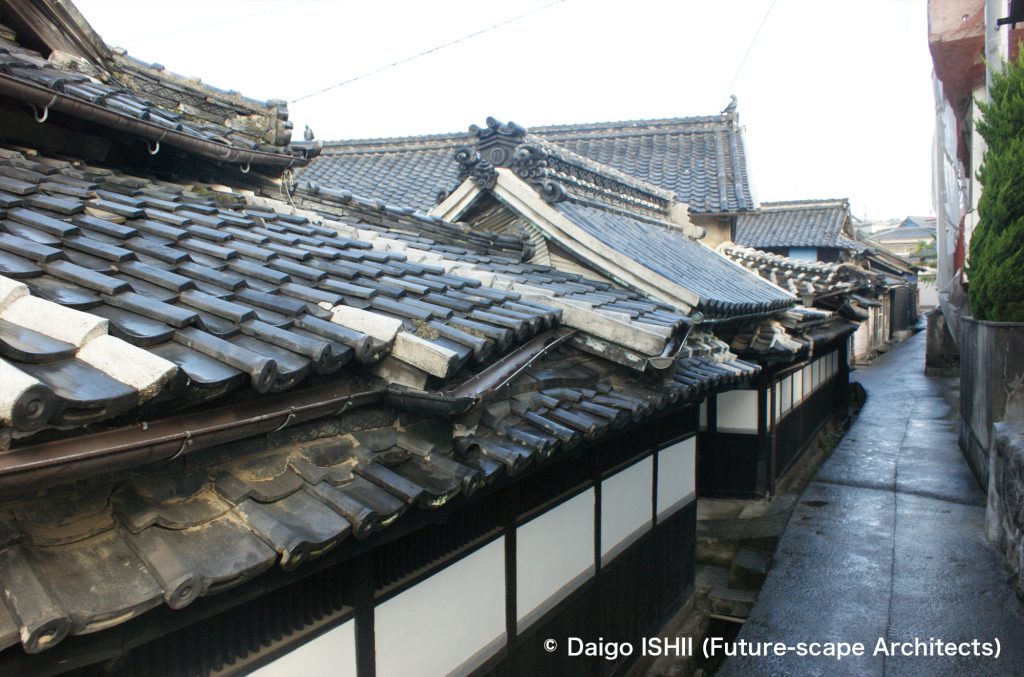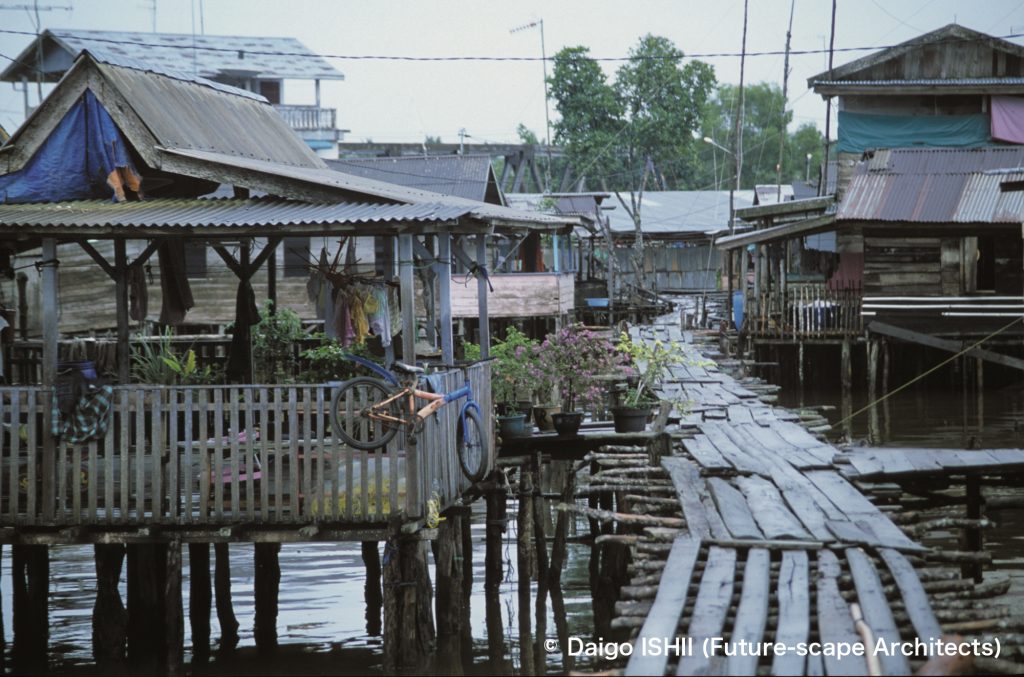妻有の名の由来の一つが「とどのつまり」。山に囲まれ、外と行き来する道が不便な上、冬には豪雪で、その道も閉ざされて孤立する地域だったため。
One of the origins of the name Tsumari is "Todo no Tsumari (dead end)" Surrounded by mountains, roads from the outside were inconvenient. Moreover, due to the heavy snowfall, roads were closed, and the region was isolated in the winter.
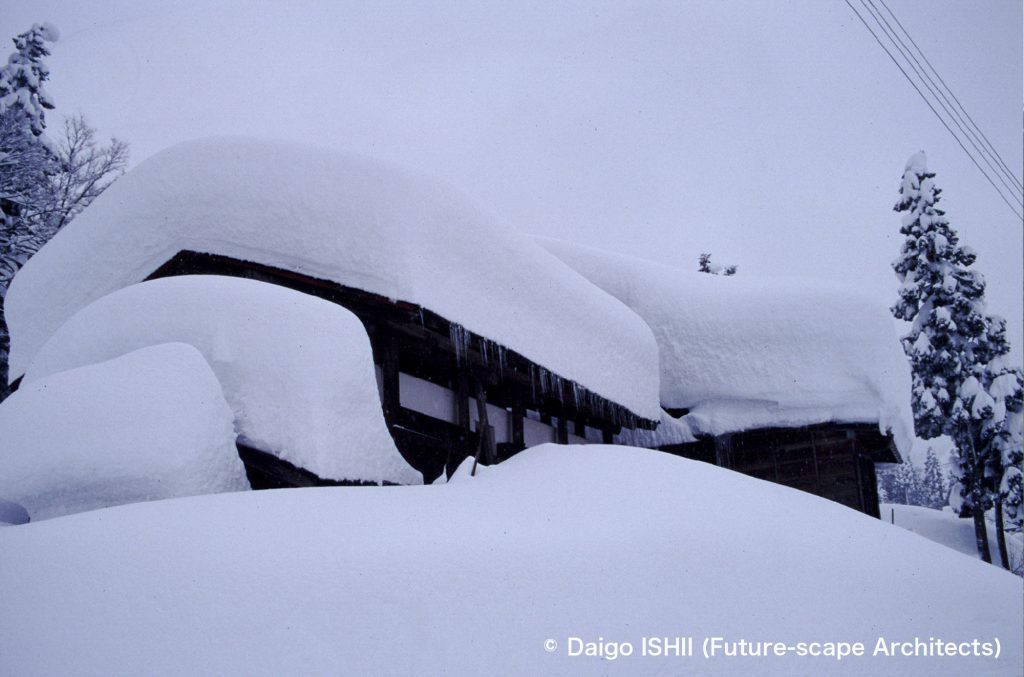
See the snow on the roof of a house in Akakura, Tokamachi.
https://goo.gl/maps/pKHb7apmWh8EnsGN9
その妻有の中心都市、十日町は、人口5ー10万人規模の都市として、世界でもっとも雪の降る場所。最高積雪は、中心部で391センチ、山間部の松之山で590センチ。さらに妻有の境から長野県側に500メートルほど入ったところですが、飯山線の森宮野原駅には日本最高積雪地点785センチを示す碑が立ちます。
大陸から来る北西季節風の寒気が、日本海を渡る際に、暖流の対馬海流から大量の湿気を吸い、本州の中央分水嶺の山脈の一つ、三国山脈にぶつかると雪雲が湧き、雪を降らせるのが、妻有の豪雪のメカニスム。標高も低く、冬の平均気温も0度ほどと、北海道のように低くありませんが、風とランドスケープの相乗が、世界有数の雪国をつくりました。
雪は厳しさであるとともに豊かさ。江戸時代のベストセラー「北越雪譜」は、作者の鈴木牧之が暮らす雪国の生活を書いた随筆で、舞台は塩沢のある魚野川流域と妻有。本には、温暖な江戸では目にしないさまざまな風物が描かれ、雪国の風土の豊かさを伝えます。そして、米も、豪雪による豊かな水がもたらす恵み。
1950年に始まった「十日町雪まつり」も、ネガティブだった「雪を友とし、雪を楽しむ」ための祭り。地元民に日本で最初の雪まつりと教わり、規模では圧倒する「さっぽろ雪まつり」に、歴史では勝っていると思っていましたが、調べれば、「さっぽろ雪まつり」より2週間早く、第1回を開催しただけで、圧倒的元祖かは微妙。ただし、自衛隊が主力の「さっぽろ雪まつり」と違い、市民の手づくり感にやさしい気分になり、個人的には「温かい雪まつり日本一」。2019年の事故で、規模が縮小されていますが、以前のように、妻有の雪の温かさを伝えてほしい。
妻有に雪が本格的に降るのは年明け。半月ほどで、2~3m近い積雪となり、雪の盛りは2月末まで続きます。その雪も4月末には消え、8月頭には、フェーン現象の影響で、40度近い日本有数の夏の暑さとなります。
Tokamachi, the central city of Tsumari, is the city where it snows the most in the world among the cities with a population of 50,000 to 100,000. The maximum snow depth is 391 cm in downtown Tokamachi and 590 cm in the mountainous Matsunoyama. Furthermore, at Mori Miyanohara Station, located about 500 meters from the border of Tsumari on the Nagano side, a monument that marks the highest snowfall in Japan at 785 centimeters stands.
When the cold northwest monsoon from the continental crosses the Sea of Japan, it absorbs a large amount of moisture from the warm Tsushima Current. When it hits the Mikuni Mountains, one of the mountains in the central divide of Japan, snow clouds form, and snow falls. That is the mechanism of heavy snowfall in Tsumari. The altitude is low, and the average winter temperature is about 0 degrees Celsius. The synergy of wind and landscape has created one of the world's most snowy regions.
Snow is both harsh and rich. The best-selling book in the first half of the 19th century, "Hokuetsu Seppū," is an essay about life in a snowy country by the author, Bokushi Suzuki. Tsumari was included in the setting of the book. The book depicted various landscapes that could not be seen in the warm Edo (Tokyo), conveying the richness of the climate of the snow country. The rice is also the blessing of the rich water that heavy snowfall brings.
The Tokamachi Snow Festival, which started in 1950, was also a festival to "enjoy the snow as a friend," in contrast with snow that had a negative image. The locals told me that it was the first snow festival in Japan, and I thought that the Tokamachi Snow Festival was superior in history than the Sapporo Snow Festival, which was overwhelming in scale. The first Tokamachi Snow Festival was held two weeks earlier than the first Sapporo Snow Festival, so it's a little hard to define that the Tokamachi Snow Festival is the overwhelming origin of snow festival. However, unlike the Sapporo Snow Festival, which the Self-Defense Forces mainly install, the Tokamachi Snow Festival is full of the warm hand-made feel by the citizens. I believe it is "the warmest snow festival in Japan." Due to the accident in 2019, the festival is now reduced. I hope it will go back as before to show the warmth of Tsumari's snow.
In the beginning of the new year, snow starts to fall in earnest in Tsumari. In about half a month, 2 to 3 meters of snow accumulates. The peak of snowfall continues until the end of February. The snow disappears at the end of April, and in the beginning of August, due to the Foehn phenomenon, it reaches nearly 40 degrees Celsius, one of the regions with the hottest summer in Japan.
妻有の雪の風景 / Snow scenery in Tsumari

See a local house buried in snow.
https://goo.gl/maps/daAzkbfxwFULwHpu9
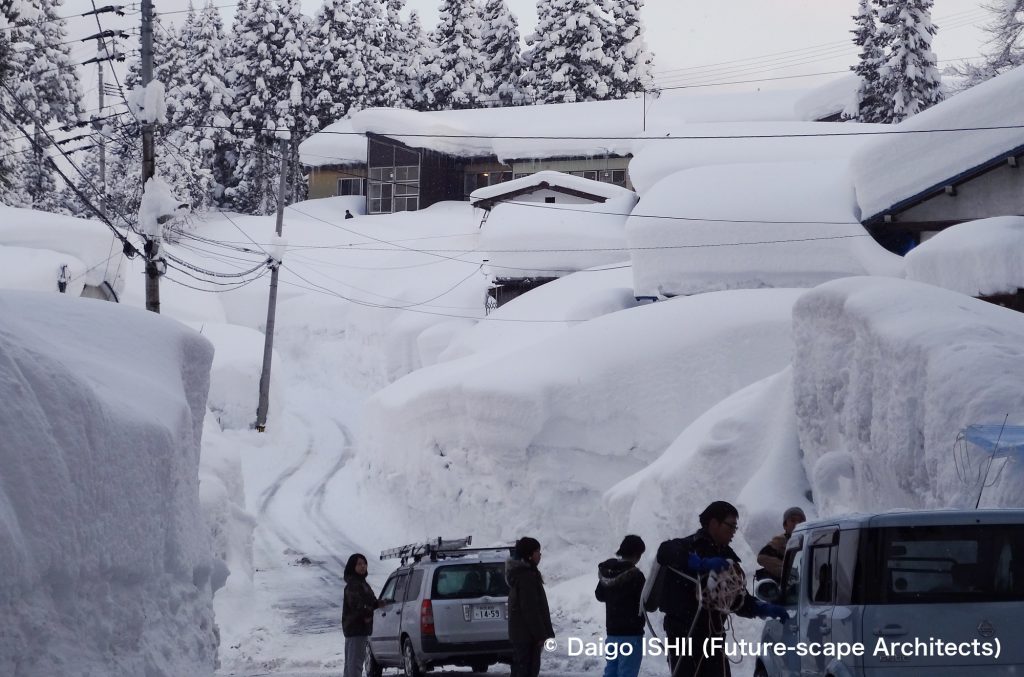
See the streetscape in the snow in Matsunoyama.
https://goo.gl/maps/JjwhpFX3XUhdG16H6

See the landscape in the snow in Akakura village.
https://goo.gl/maps/pKHb7apmWh8EnsGN9
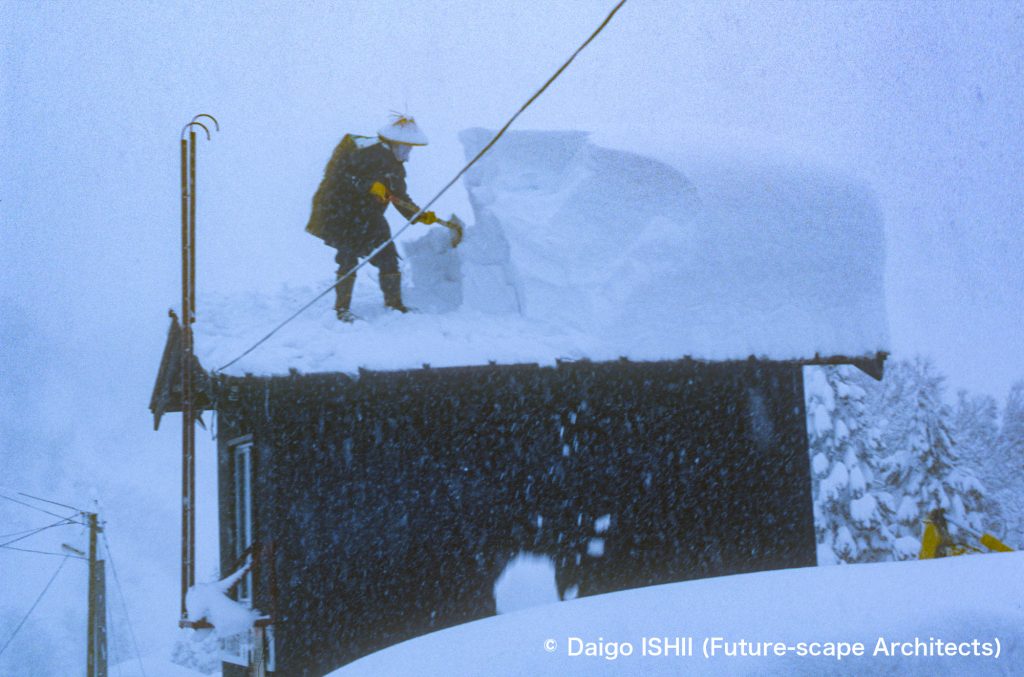
See a local resident who is clearing snow on the roof in Akakura village.
https://goo.gl/maps/pKHb7apmWh8EnsGN9

Near Matsushiro Station, residents are clearing the snow all together in front of their homes between snowfalls.
https://goo.gl/maps/aAPqh1pJu3NkSmwa6

See a local resident who is clearing the snow in downtown Tokamachi.
https://goo.gl/maps/MUUN8PvuX3HqbSPf7
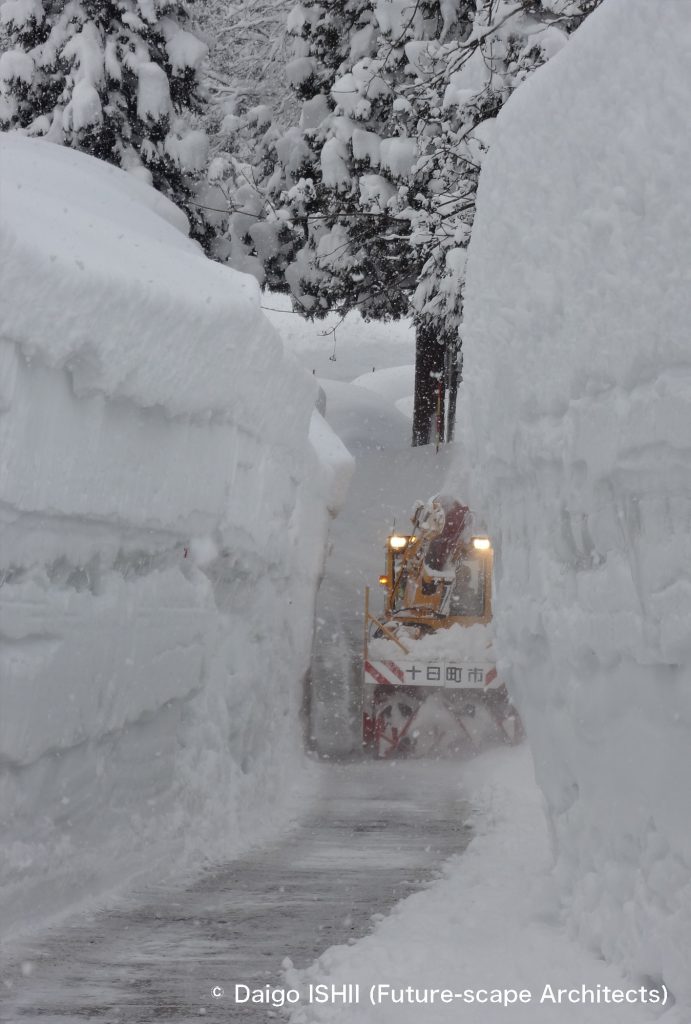
A snow blower that clears the roads of a village in Matsunoyama. The removed snow forms high walls on both sides, and the width of the road is so narrow that only light vehicles can pass.
https://goo.gl/maps/JjwhpFX3XUhdG16H6
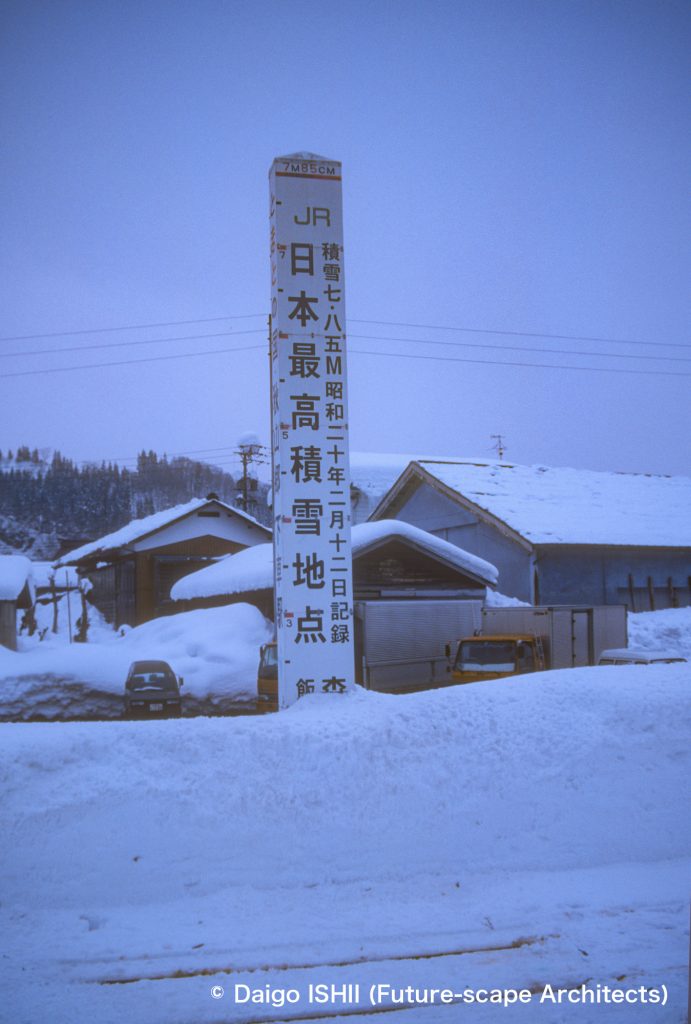
At Mori Miyanohara Station, a monument that marks the highest snowfall in Japan at 785 centimeters stands.
https://goo.gl/maps/zzgwU915o3wGhqCq8
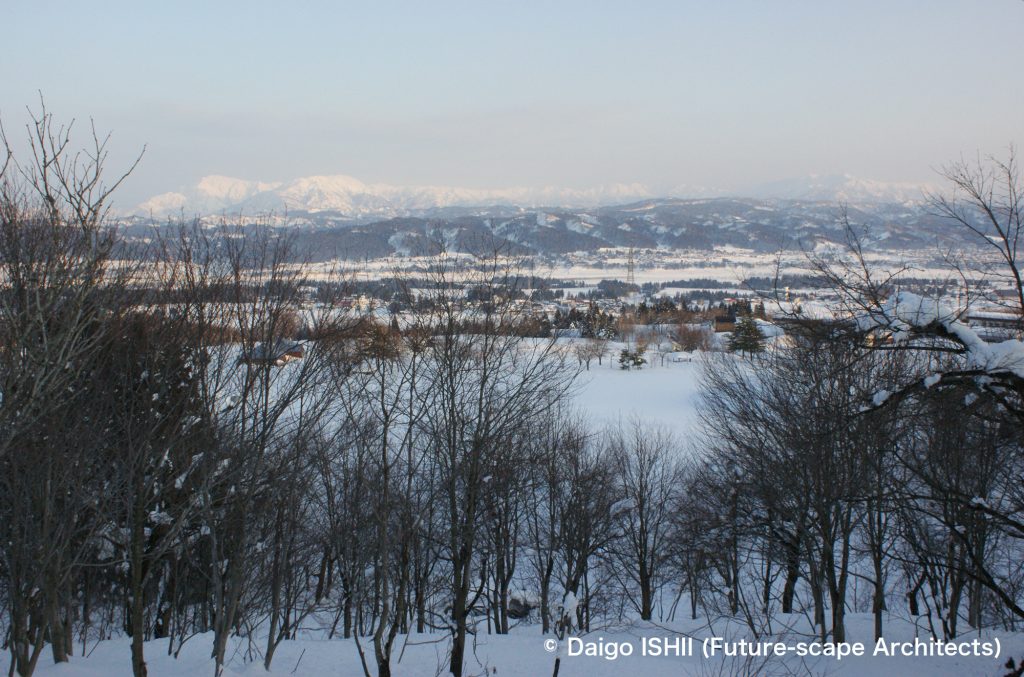
See the snowy scenery of Tsumari from the hill in Kawanishi.
https://goo.gl/maps/C85SJg7pMoqKP5aq5
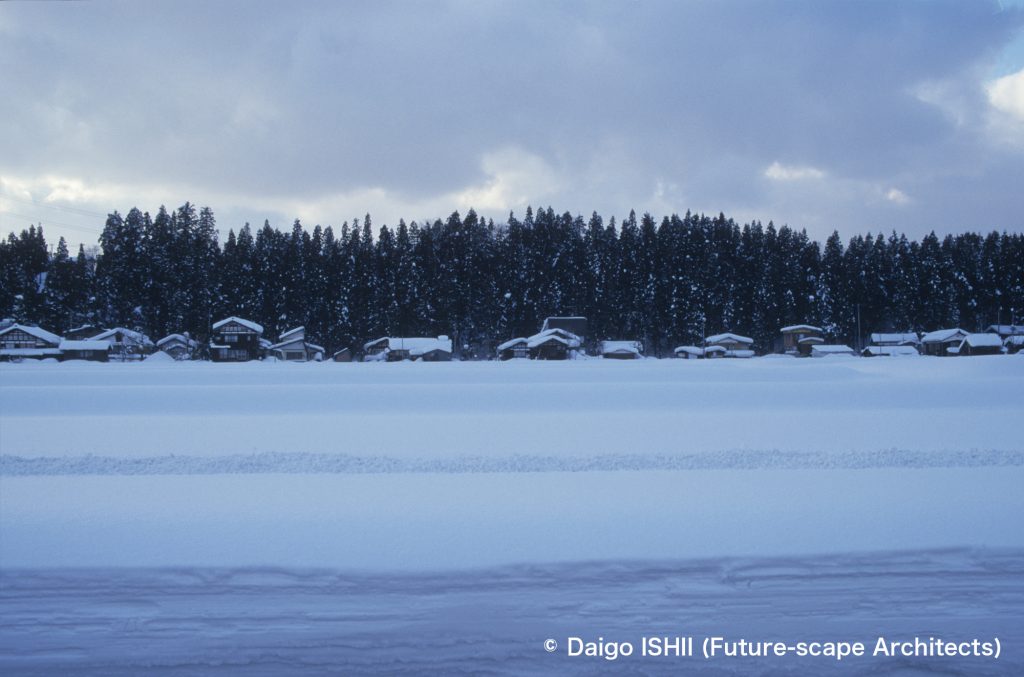
See the snowy scenery and local houses in Yoshida.
https://goo.gl/maps/g4m53j4Fd6LDUXba9

See fog over the snowy scenery of Kawanishi.
https://goo.gl/maps/g4m53j4Fd6LDUXba9
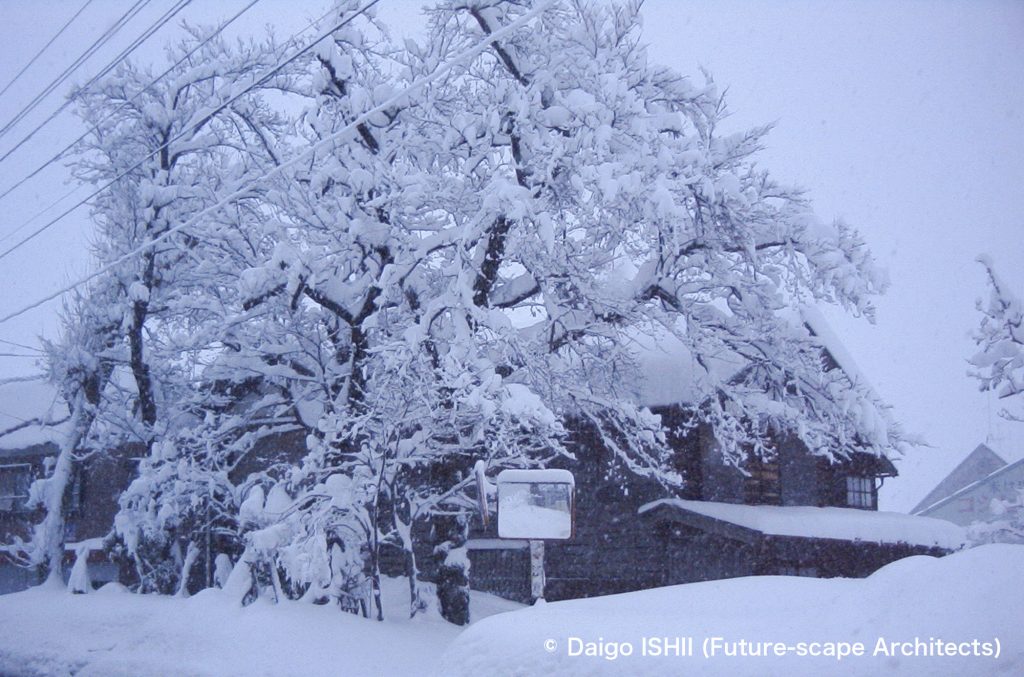
See a big tree covered with snow on the central street in Kawanishi.
https://goo.gl/maps/gysDXrQNVHPP7LTv6
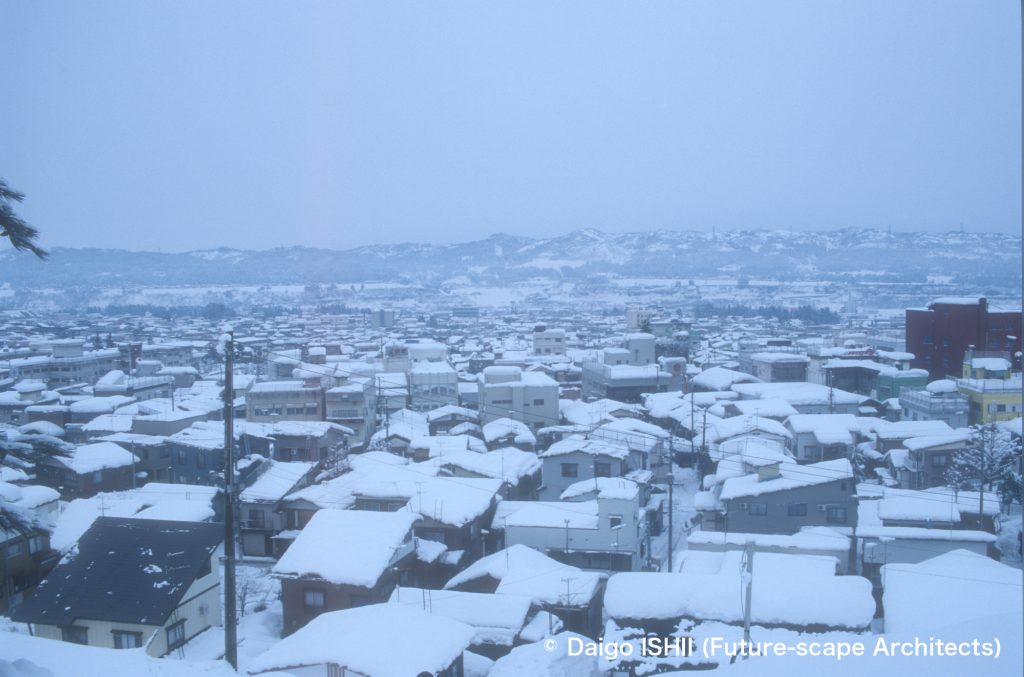
See the snow scene in Downtown Tokamachi.
https://maps.app.goo.gl/7XAVPf4KbosTykek9
十日町雪まつり / Tokamachi Snow Festival
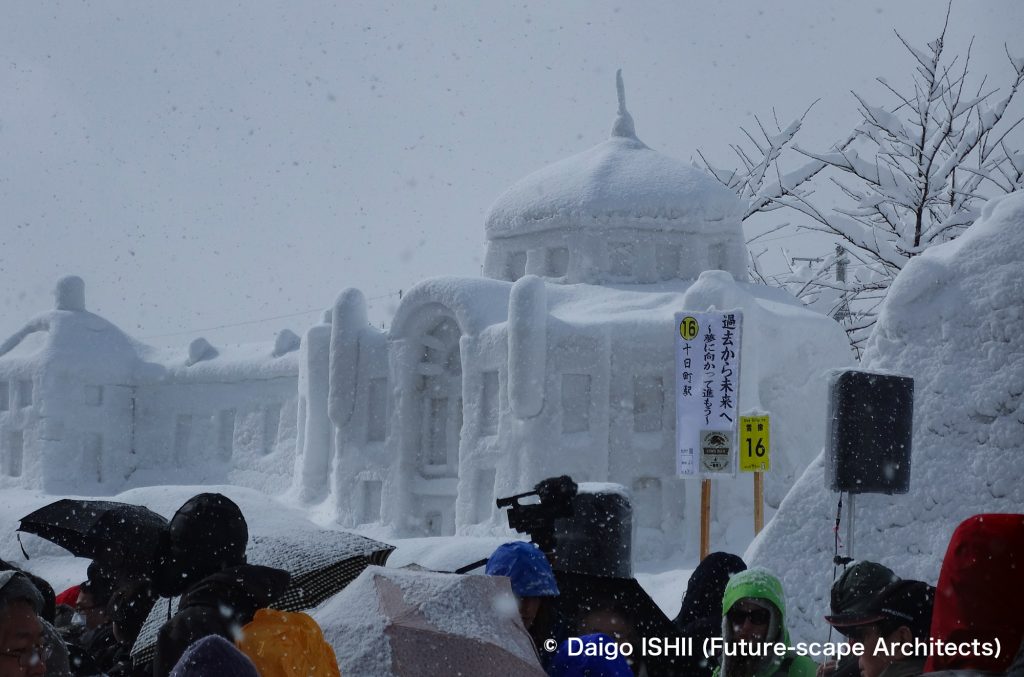
See the main venue of the Tokamachi Snow Festival.
https://goo.gl/maps/EMPWYFCTwheNznaU8
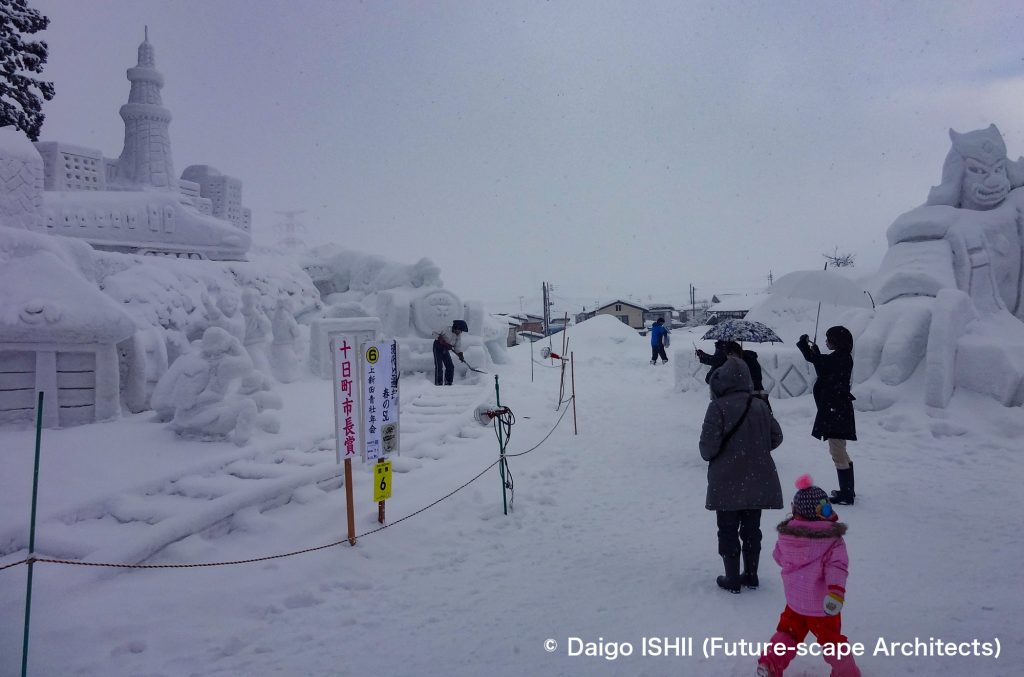
See the main venue of the Tokamachi Snow Festival.
https://goo.gl/maps/EMPWYFCTwheNznaU8
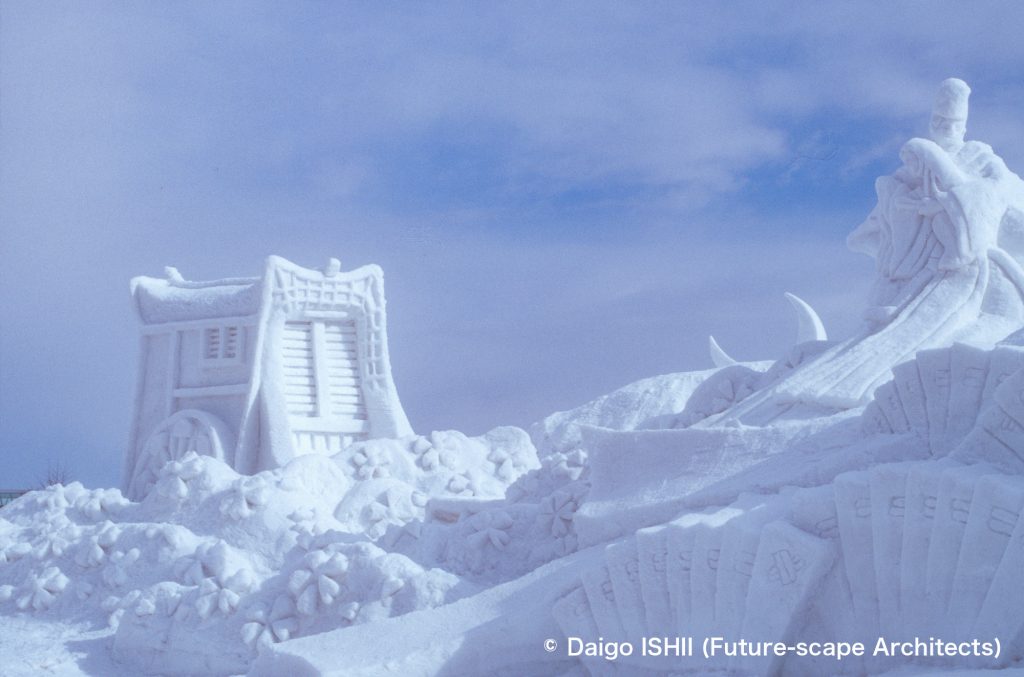
See the works for the Tokamachi Snow Festival. The customs of the Heian period seemed to be the theme.
https://goo.gl/maps/EMPWYFCTwheNznaU8
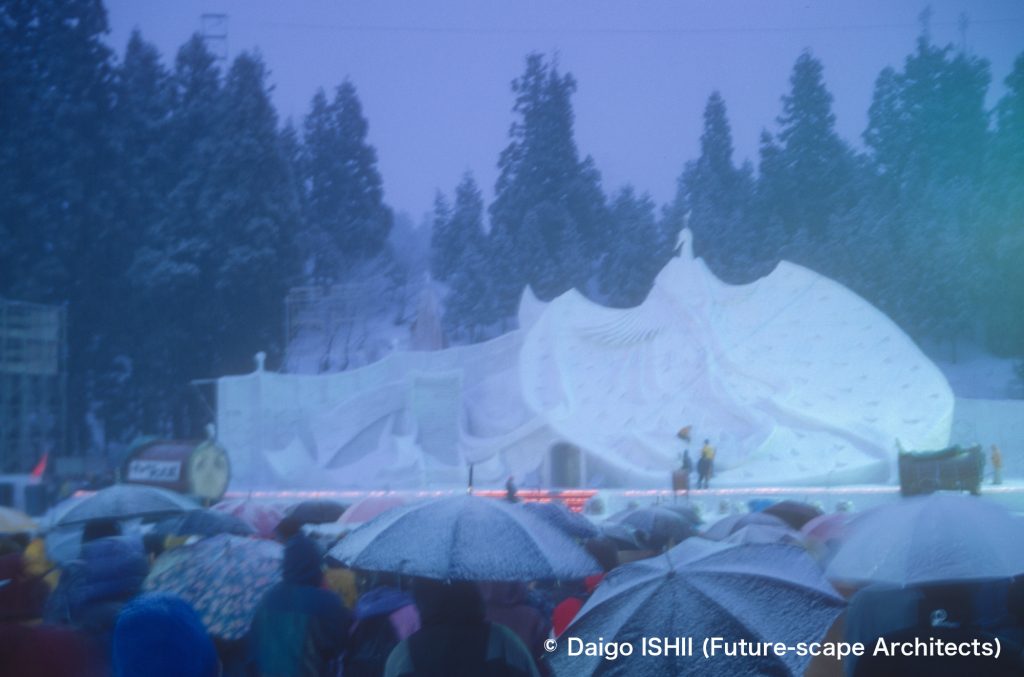
See a huge snow set built in a large square for an event in the Tokamachi Snow Festival. In front of it, song program lives and concerts are held.
https://goo.gl/maps/EMPWYFCTwheNznaU8
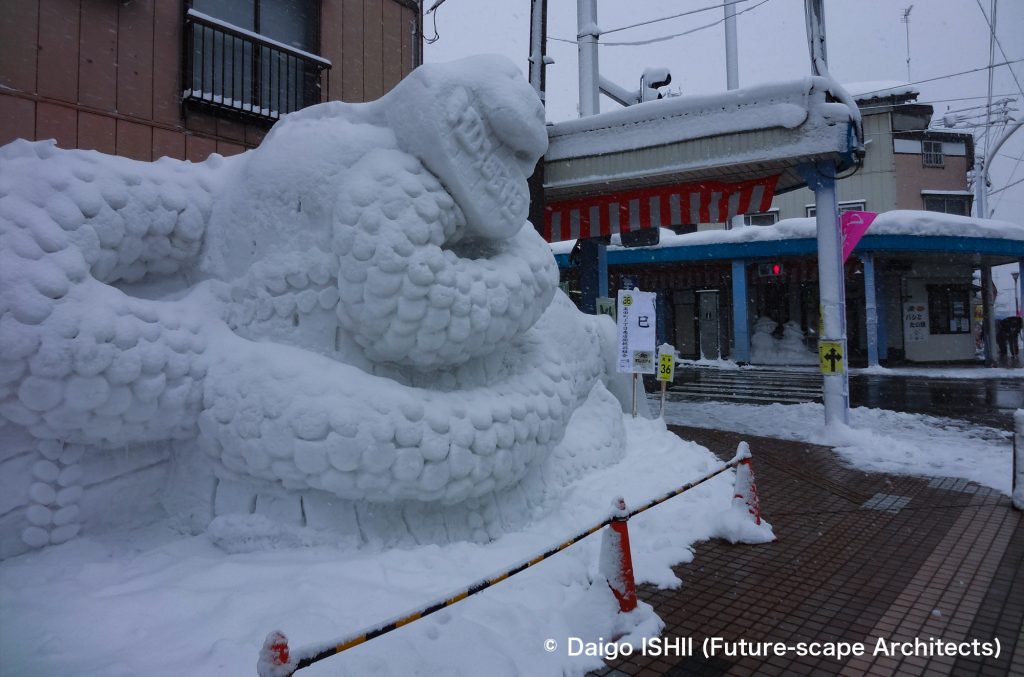
At the Tokamachi Snow Festival, works will be installed on street corners and in front of shops. A work expresses a snake after the year of the snake.
https://goo.gl/maps/EMPWYFCTwheNznaU8

During the Tokamachi Snow Festival, a snow rabbit beckoned in front of a bar with a bottle of snow that was written as celebratory sake.
https://goo.gl/maps/EMPWYFCTwheNznaU8

During the Tokamachi Snow Festival, Anpanman was waving in front of a shop.
https://goo.gl/maps/EMPWYFCTwheNznaU8
大地の芸術祭の作品「今を楽しめ」 / "Carpe Diem" in Echigo Tsumari Triennale
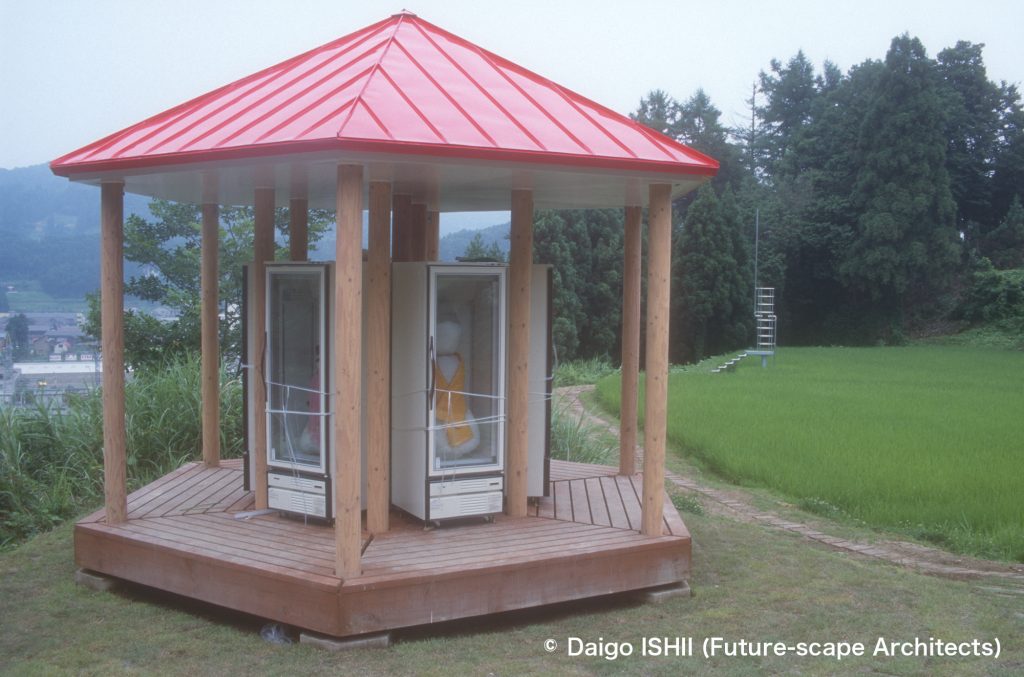
"Carpe Diem" is a snowman refrigerator created by artist Simon Beer for the 2000 Echigo-Tsumari Art Triennale. It was fenced with a snow fence plate in 2015, but it was removed after that. I wonder if the snowman in the heavy snowfall area has melted in the summer heat after nearly 20 years. It's a shame because I liked the Columbus egg-like idea and the excellent title.
https://goo.gl/maps/YsxH2aDppJbTFQkVA
ご感想はこちらへ / Click here for your impressions
参考文献 / reference
Wikipedia
写真の無断使用、転用はご遠慮下さい。/ Please do not use or upload our photos without permission.
